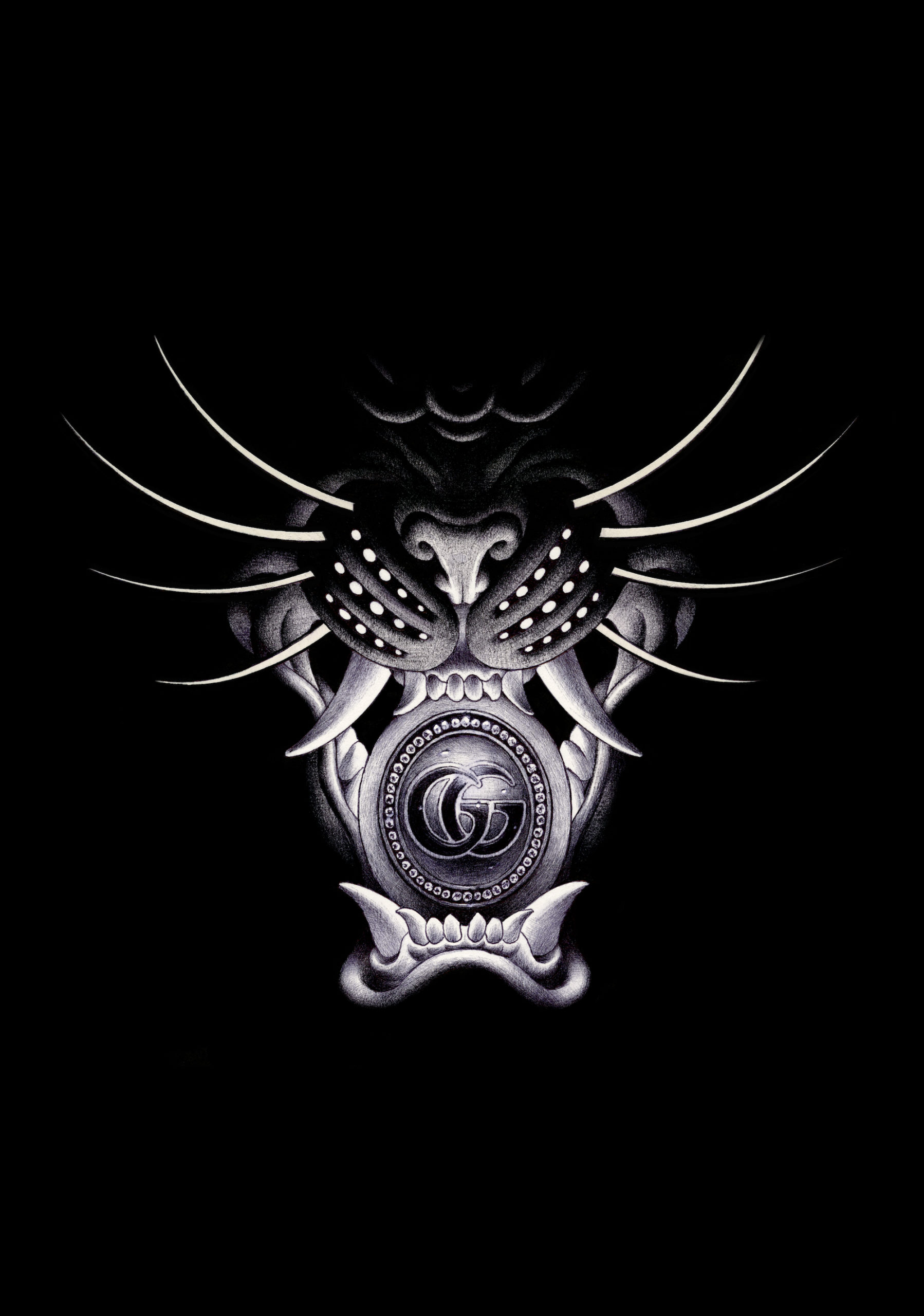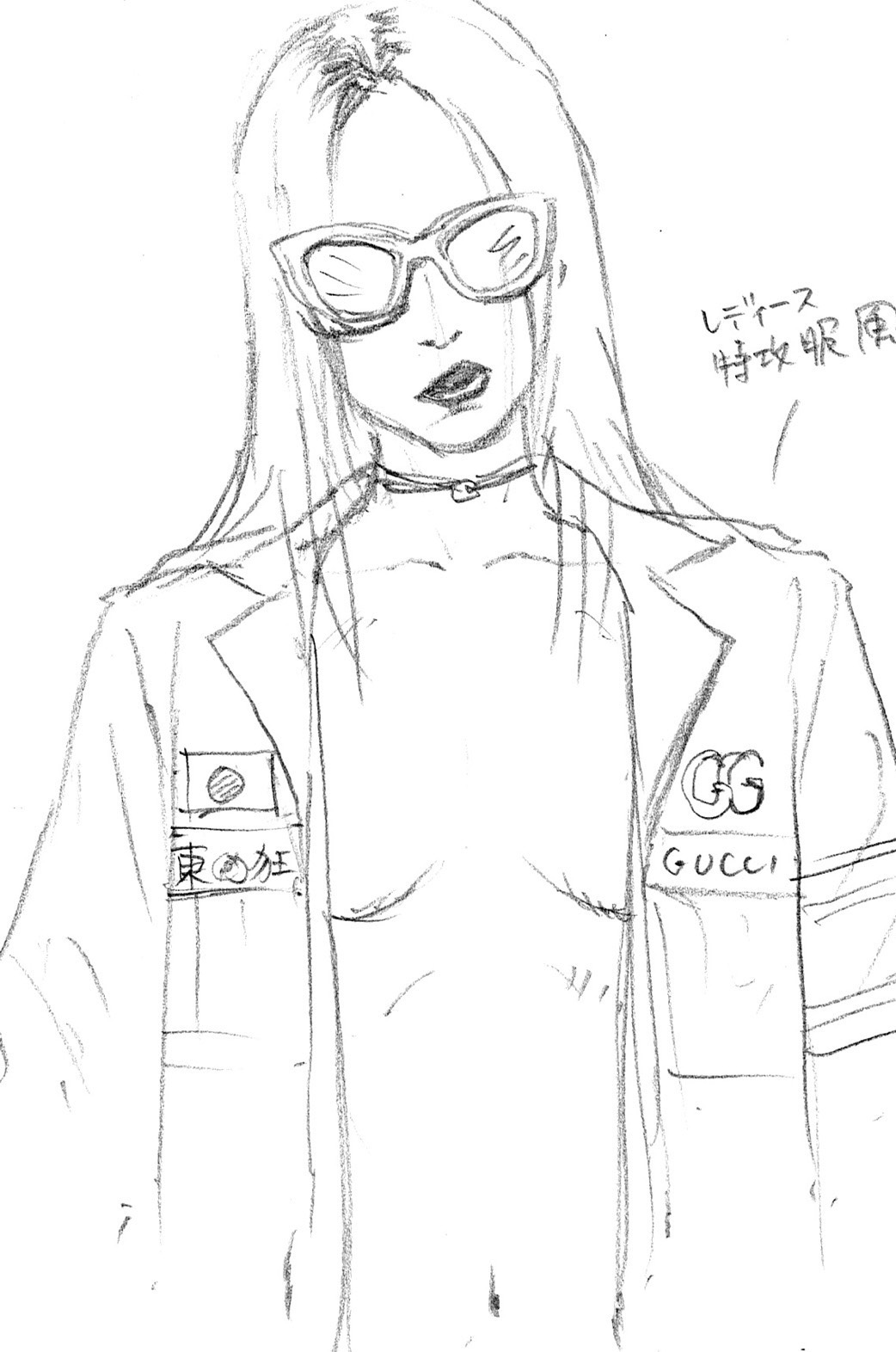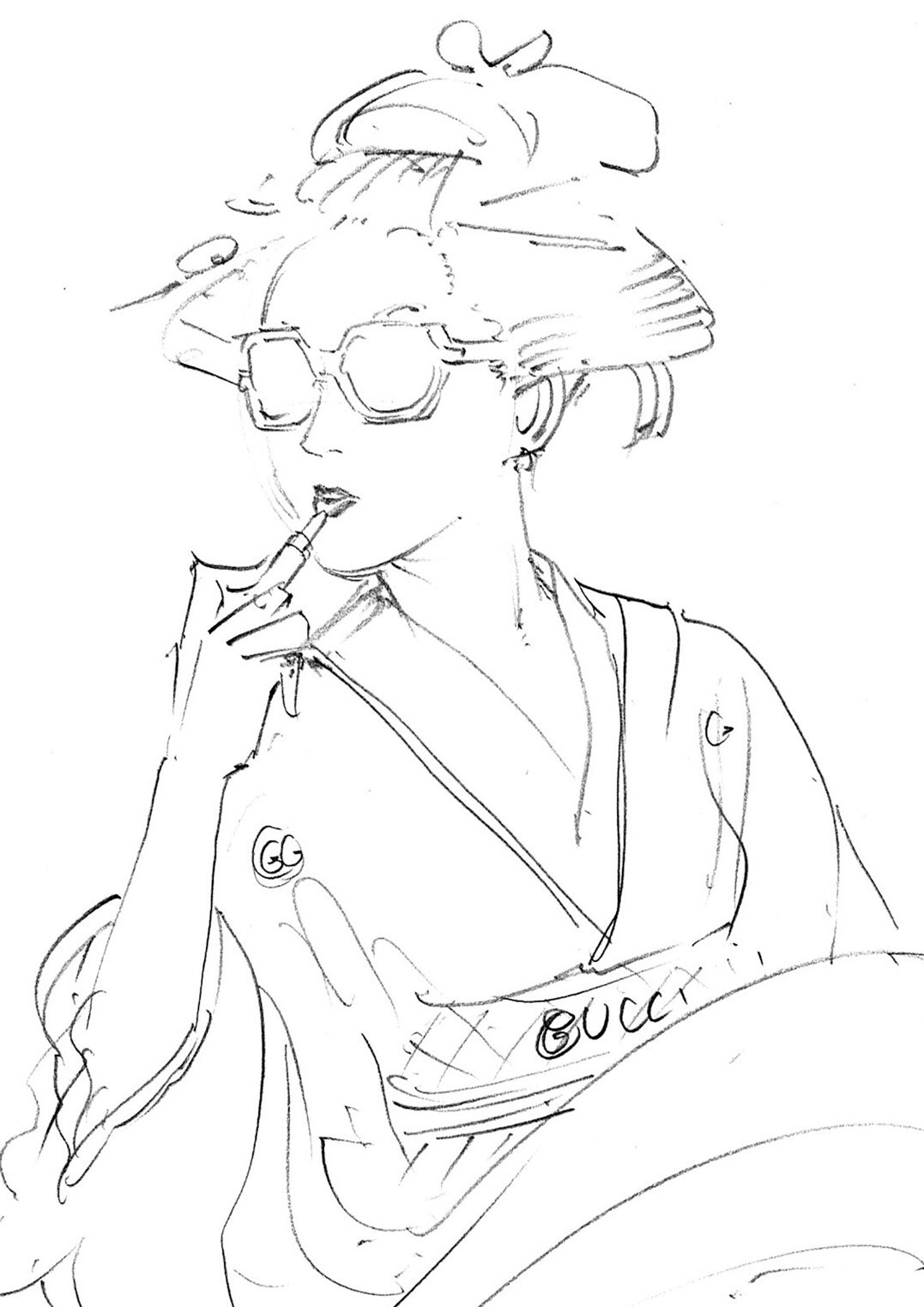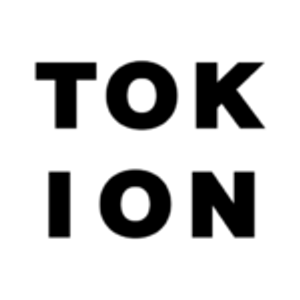The artist Shohei Otomo imbues his artworks done in ballpoint pen with a message and soul. The artworks Otomo recently drew as a collaboration with Gucci embody this. Drawing them with a ballpoint pen allows him to achieve an unimaginable level of elaborate detail and an overwhelming descriptive power. There is a uniquely “Japanese” quality expressed within the works.
How does he go about creating and depicting works evocative of the “Japan” that even the Japanese people are losing sight of amidst advancing globalization? This article will consider Shohei Otomo’s appeal by examining rough sketches from his creative process as well as the finished pieces.
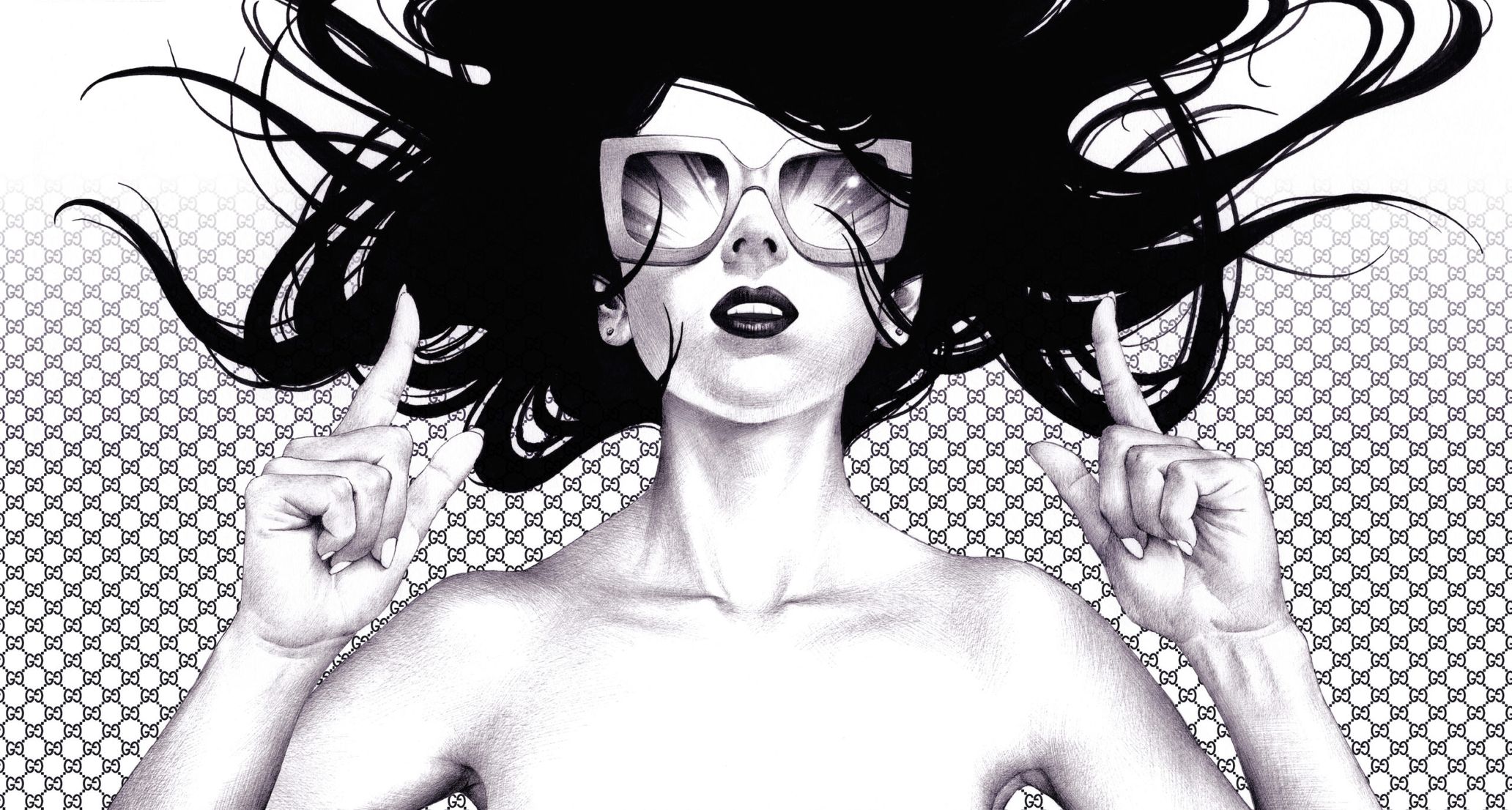
The scope of art widens in tandem with advances in technology. Means of expression grow broader and more diverse as time marches on, such as with VR for AI and AR. Such advances and widening occur due to a desire for art among both the artists expressing themselves and the audience. Now more than ever, art is deeply entangled not only with technology, but also with fashion and music as it extends outward like a vast ocean. This should be apparent to anyone who takes a look at social media sites, where tons of art is being uploaded every day. It is wonderful that audiences are able to freely enjoy such art which is now so accessible. Yet rather than just merely appreciating it, at times we ought to turn our attention to the artist’s sensibilities and viewpoint, as well as the background behind its creation.
Shohei Otomo is an artist who uses ballpoint pens to produce drawn pieces in black and white that are elaborate and subtle. Otomo’s works are drawn using the type of ballpoint pens for office use that can be found anywhere. It is this means of expression with a sense of tension hanging over it from the fact that these strokes of the pen cannot be undone that draws the audience in. In this article we will thoroughly examine the new pieces drawn by Otomo by incorporating iconic elements from Gucci as well as the rough sketches made on the way to creating them out of a desire to take a deep dive into both the messages embedded within them and the appeal of his work, together with comments from the artist himself.
Two pieces imbued with Gucci elements and “hope”
One of the two pieces he sketched portrays a motif of a kinetic, beautiful woman, while the other is that of a lion floating amidst a jet-black backdrop. At the same time these pieces take on a finely-detailed realism that one would not expect from works drawn with a ballpoint pen. When one examines both pieces by visually comparing them, one senses that they inhabit a contrasting relationship between yin and yang (light and shadow). If the piece with the woman in which the elements of the Gucci clothing pattern is represented in a gradation from bottom to top is taken as the yang, then the picture of the lion’s mouth with the double G pattern rising up out of the darkness represents the yin. In light of this contrasting nature, one might conjecture that the messages embedded within them are different, but in his response Otomo indicated that this is not the case. “I wanted to imbue the two pieces with this contrast between black and white. The portrait of the woman is an ascending image. The lion, which has held the significance of dispelling disaster and ill will since long ago in Japan, is an image indicative of the power that resides within.” Speaking about both pieces like so, Otomo used his ballpoint pen to imbue them with such “hope.”
©SHOHEI OTOMO
Next, we will examine some of the rough sketches from the process of creating these pieces. Along with the woman dressed in the style of the bosozoku (Japanese biker gangs) wearing the tokko-huku jacket typical they are known for, we see a woman’s arm holding a wakizashi (short sword) and a courtesan wearing sunglasses. As one can see by looking at these prior works, Otomo actively incorporates Japan’s traditional culture and subcultures into his works. Otomo has established a sense of originality through this mode of expression in which Japanese culture is fused with symbols of modernity such as the sunglasses. I believe that this style presents the viewer with new value while stirring up their emotions.
Let’s examine these even more closely. Upon closer inspection, one realizes that in both cases their “eyes” are concealed: the woman’s by her sunglasses and the lion’s by the darkness. Works in which the subject’s eyes are not depicted is a feature often seen in Otomo’s past works. In a previous interview, Otomo offered the reply, “I feel that drawing absolutely everything throws my rhythm off, whereas leaving some things out produces its own rhythm … [omitted] … Doing it this way produces an enigmatic depth, and I am partially of the mind that I want this to serve as an entry point for approaching my work.” By not depicting absolutely everything, he creates blank spaces and intervals. These blank spaces and intervals are part of a sensibility that is uniquely Japanese, and become apparent by observing them as a characteristic unique to Otomo.
Shohei Otomo is using his ballpoint pen to clear the way in an anxious world with an uncertain future
But why is it the case that Otomo, who studied oil painting back in his student days, draws pictures in ballpoint pen and not pencil? “My personal stance when it comes to drawing pictures is to leave them fundamentally unchanged from when I first jot them down in my notebook. I find they turn out better on ordinary stationary rather than with specialized art supplies. The feeling resembles drawing pictures on the notebooks you would jot notes down on during class, like the ones made for writing (kanji) characters. As for the ballpoint pens, I like the cheap ones for office use that are hard to draw with.” Ever since he was a young child, Otomo created pieces over a long period of time by continuing to use his favorite implements. This accumulated output is a testament to Otomo’s true self, and ties directly in with his outstanding powers of description.
These two pieces imbued with Otomo’s heart and soul were created right in the middle of the novel coronavirus pandemic. They have an intense power that serves to embolden us and steel us mentally as we live through one day after another full of hope mixed with uncertainty. Shohei Otomo will continue to express himself via works that interweave the past with the present via ballpoint pen. One can’t help but wonder where such a rare artist as he is headed in the future.
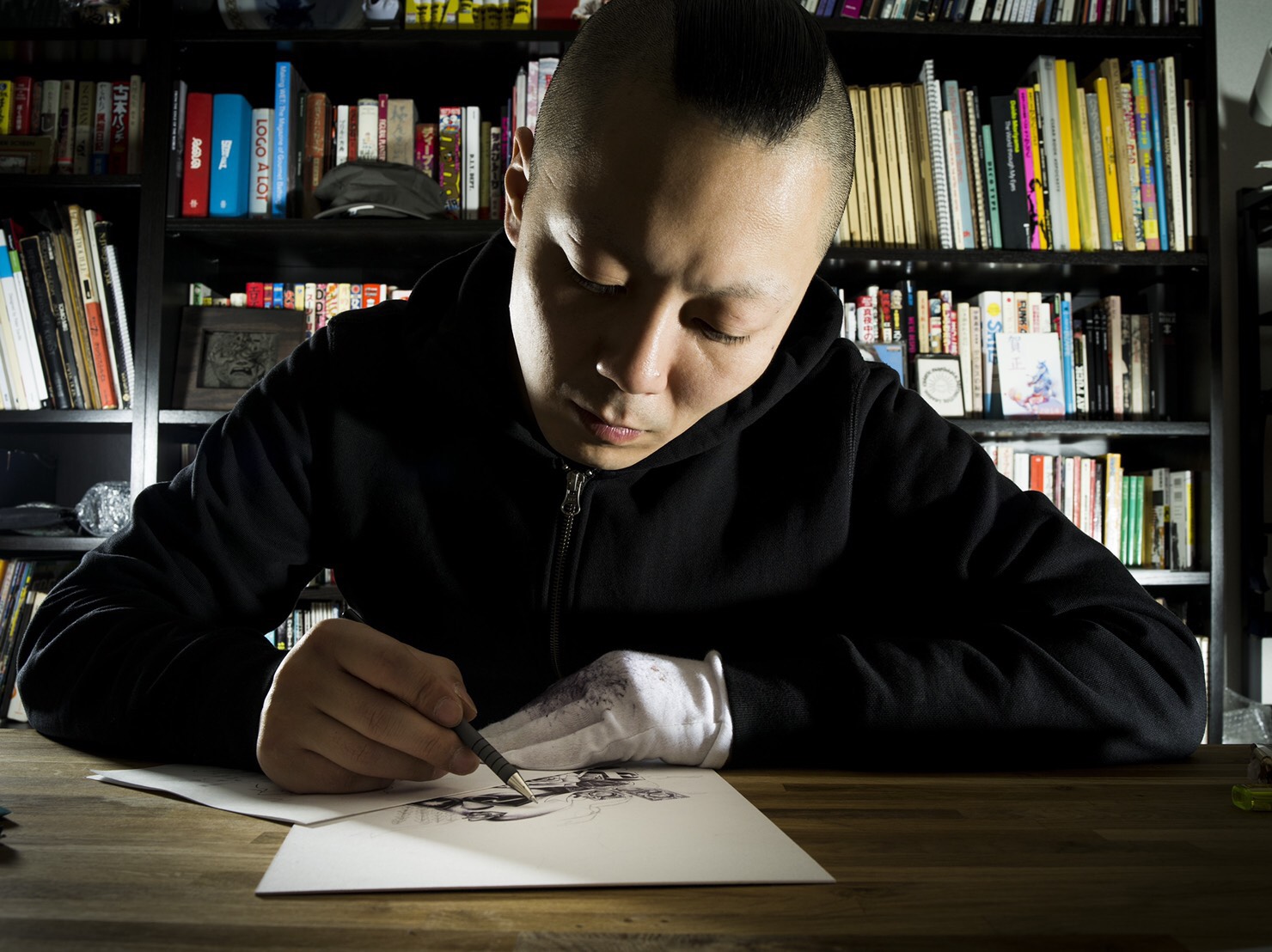
Shohei Otomo
Born in Musashino City, Tokyo in 1980. After graduating from Tama Art University, embarked upon his activities as an artist. Has released works made using ballpoint pens online, and has garnered worldwide recognition as an artist via the internet. Has displayed works in places like Japan, Paris, Italy, Australia, and Hong Kong to date. Recently has taken up the challenge of art via new forms of expression such as sculpted artworks and AR filter pieces.
Photography Yoshimitsu Umekawa
Motion & Sound Shigeru Suzuki (THE ME)
Cooperation Abilio Marcelo Hagiwara

